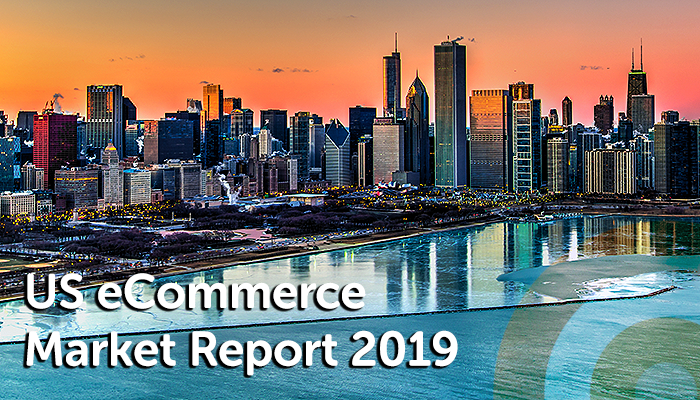
2019 US eCommerce Market Report
23/08/2021
Bad Data is Expensive!
14/09/2021UK Retail Transformation
Yet another high street Stallworth has shut down; Mothercare UK has become the latest victim of the retail revolution. Despite online sales being up in 2018, the company made a loss of £208 million compared to a £10 million loss in 2017. Directors attributed this to an increase in adjusted items, e.g. property and restructuring costs, foreign currency adjustments, etc. The company recently announced that it will close all 79 stores across the UK, resulting in a loss of 2,500 jobs. The retail chain is said to have been “under pressure for years as families looking for budget options relied on supermarket brands and online retailers such as Amazon.” Unfortunately, retail giants such as Amazon are capable of undercutting brands like Mothercare at every turn, and for retailers in general, this is by no means a rare occurrence.
Challenges for Offline Retail
The main challenge brick and mortar retailers face is the same challenge facing millennials…high rent and property prices. The likes of Mothercare requires prime real estate to survive; a cost that pure online retailers such as Amazon and ASOS simply don’t have to worry about. Not to mention all of the additional costs that a physical store incurs, such as paying service staff, light & heating, etc. Changing trends are also influencing the convenient ‘virtual experience’ on the average consumer who is time poor and therefore less inclined to shop on the high street. MotherCare’s profit lost means that consumers are evidently looking elsewhere for products. This is reflected in over 70% of consumers saying that Amazon is their number one option for online shopping, leaving little room for the MotherCares and offline retailers of this world.

There are few exceptions to the rule of online retail equalling absolute success – Primark is a perfect example of a physical retailer that doesn’t need an online presence to be successful. In fact, going online would have a negative impact on its business model. Fulfillment, website hosting and payment gateway capabilities are just some of the costs that would quickly incur for the fashion retailer, which would in turn offer meager profit margins due to its competitive pricing strategy.
The Amazon Takeover
86% of the UK population has used eCommerce giant Amazon at some point, and 59% claim to be loyal users. This is largely due to the sheer scale that Amazon operates at. Sellers need to offer top rate customer service in order to compete against other sellers as feedback is one of the biggest indicators of success; tools like Feedback Whiz are there to lend a hand too. Buyers in 2019 heavily rely on reviews outside Amazon too, hence why companies like TrustPilot and Feefo work well for retail in general, but feedback on Amazon is a lot simpler and easy to navigate with a straightforward 5 star system. Also, thanks to Amazon’s massive supply chain and logistics infrastructure, orders are typically fulfilled punctually, which is vital – FBA also pitches the logistics industry against itself, thus driving down fulfillment costs that ultimately save the consumer significant money. As with all things Amazon, it’s not necessarily best for its partners or competitors, but it sure is good for consumers!
Let’s also not forget the convenience factor of Amazon. While high street retailers graciously piggybacked off the success of the American invention of the “shopping mall” with dozens of shops in one place, Amazon has now digitally replaced it and few competitors can compete either in an offline or online capacity.
Morality of the Consumer
Despite 45% of consumers believing that Amazon is to blame for retailers closing, 40% also believe that it’s good for “independent retail.” Although, how you define “good for independent retail”? Marketplaces like Amazon and Alibaba almost favor smaller sellers – they essentially force them to drive down prices and compete against fellow sellers with a capitalistic “lowest price, free for all” strategy. This is also echoed by Amazon’s own customer base – over half of its users believe that Amazon has the best prices. Amazon sellers also have a plethora of software tools like CashCow Pro and Profitero to help them crunch the numbers, calculate precise margins and ultimately reprice based on competitors’ sales and current offers in real time.

While retail giants like Zara are at no risk of collapsing at the moment, SMB players will have to get very creative to avoid selling out to Amazon or going under. This also stands true for new sellers to the market – take GymShark for example, which has used social media influencers and product placement (among various other social media tactics) to grow its brand awareness. This may perhaps be the only way forward for retail’s next generation. The merchants of tomorrow will most likely stick to being pure play online. For example, ASOS has already created its own pure play online marketplace that has had huge success so far. As our good friend Bob Dylan once said, “The times they are a changin'”, and I struggle to see how the high street can avoid being a ghost town in 10 years from now.
Further information can be found by downloading our UK market report, find out the top shipping companies, reasons consumers abandons shopping carts and more










